What's happening at Giant Mine? September to December 2022
On this page
Engagement update
Media tours the Giant Mine site
The Giant Mine Remediation Project often receives requests for site visits from area media. Not all media tour requests can be accommodated when they are made, so in September 2022 the team invited local media representatives to tour the site. The team also extended invitations to a few reporters from southern Canada who had requested tours in the past. 11 members of the media were able to attend. The Project team began with a technical briefing in the C-Dry boardroom to provide background information to inform the tour of the site.
Following the briefing, the group was outfitted in personal protective equipment, including steel-toed boots and reflective clothing. They were then able to tour the surface of the site to capture photos and videos to share with their audiences.
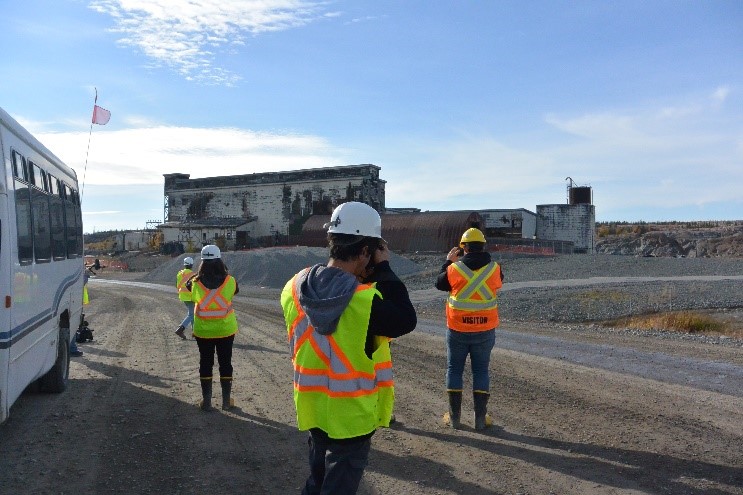

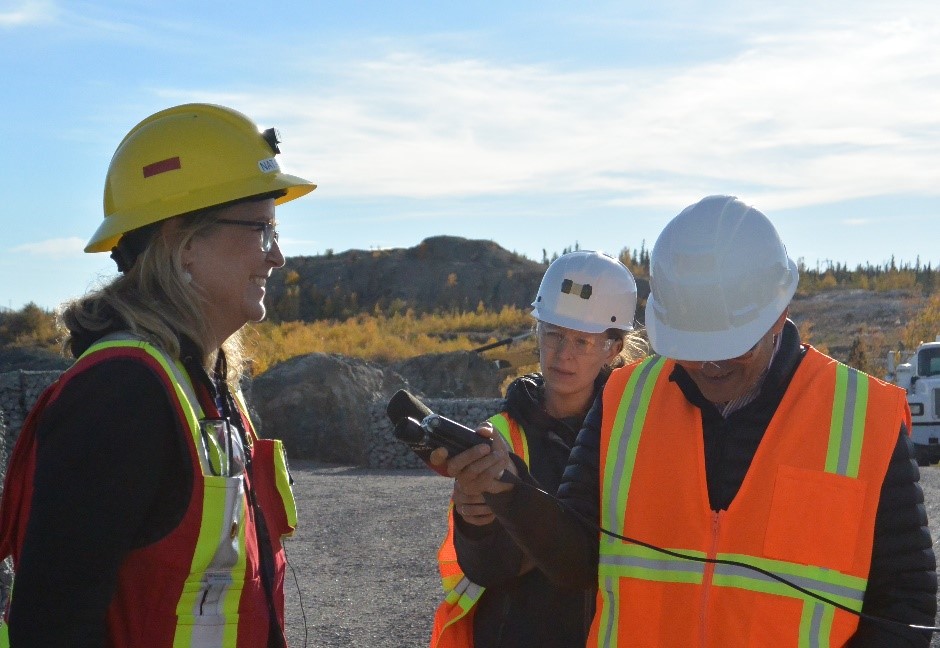

As the site changes and remediation continues, we hope to be able to arrange similar opportunities for media in future.
Yellowknives Dene First Nation makes Traditional Knowledge brochure available
The Yellowknives Dene First Nation has produced a brochure capturing some information about their use of their tradition land, including the land where the Giant Mine sites. It includes a map of the area, as well as information about:
- hunting
- trapping small game
- picking berries
- traditional gatherings
- how people prepared to meet the caribou migration
You can find a copy of the brochure on their webpage.
News with respect to the wellness study
On June 6, 2022, the Yellowknives Dene First Nation advised the Giant Mine Remediation Project they were withdrawing from the wellness study, which had been called Hoèła Weteèts'eèdeè: Overcoming Hardships from Giant Mine.
In September, the Project team met with the remaining members of the study's advisory committee to seek advice with respect to how to proceed. After careful deliberation, the committee unanimously decided to advise the Project team it should no longer proceed with the study. As such, the Project team has made the difficult decision to discontinue the wellness study. The Project team remains committed to continued engagement and consultation with Rights holders and stakeholders, and to the ongoing protection of the environment and the health and safety of Northerners as it relates to the Giant Mine site.
Site update: field season completes
Over the course of the field season, the Project's second year of early works remediation took place. This included work in the townsite area, final construction of the AR1 freeze pad and a study that looked at de-watering tailings identified for relocation in the Closure and Reclamation Plan. The Project completed significant underground backfill activities this season. The on-site non-hazardous waste landfill was also completed in 2022 and put into use, with townsite waste placed and covered in the landfill area.
Work to prepare the townsite for deconstruction began with the safe removal of asbestos waste from buildings located closer to the core area. This waste was double-bagged in accordance with asbestos disposal protocols and disposed of in the on-site landfill. The landfill's operations also ended with the field season. It will resume operating next spring. In addition, other hazardous material from the deconstructed buildings, such as fire suppression chemicals and used oils, was removed and taken off site for disposal. The remainder of the townsite buildings will be removed next field season.
DJRM First Nations Construction Corporation began building the AR1 freeze pad in fall 2021, and the work was finished this summer. The AR1 freeze pad is 1 of 4 that will be built to house the freeze program. The company had to remove nearly 65,000 m3 of rock in order to build the pad. It will provide the base of over 200 thermosyphons, which will freeze 4 of the arsenic chambers.
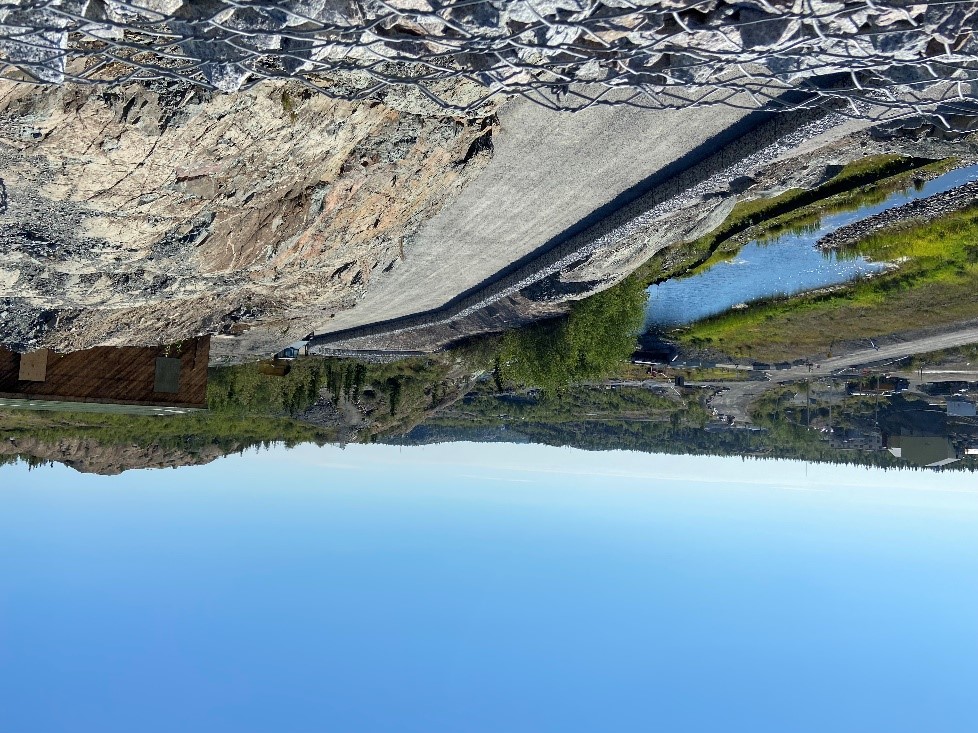
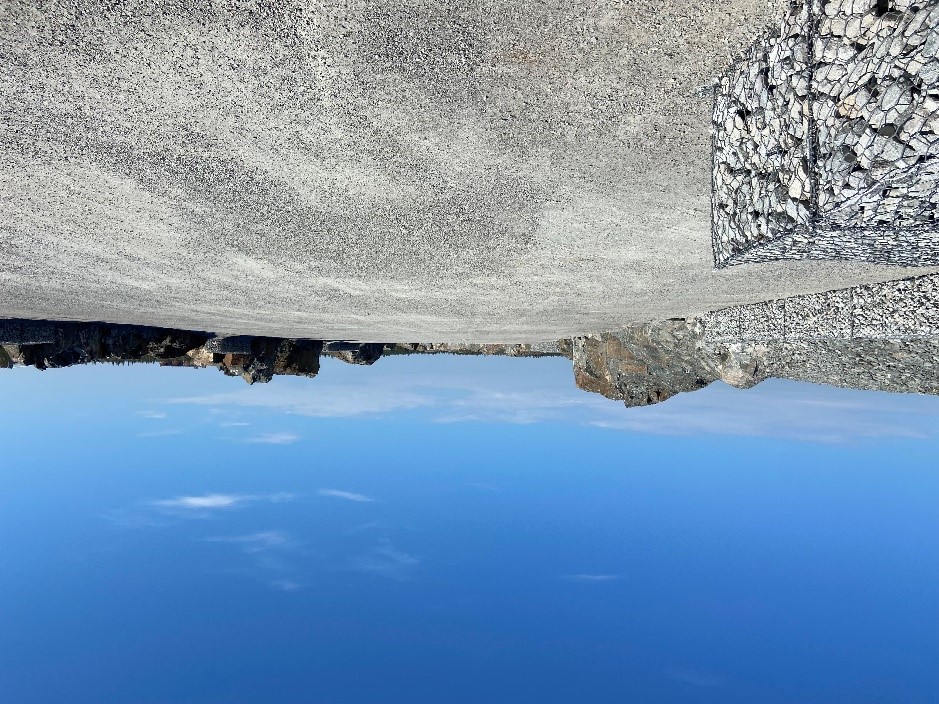
During the months of August, September and October, the Project conducted a de-watering study on the South Pond Tailings. As part of the Closure and Reclamation Plan, the tailings in the South Pond will be relocated to the North and Central Tailings Ponds, to reduce their footprint. To make the future relocation easier, the Project needed to conduct a study to determine our ability to remove water, or de-water, from the tailings. The Project team is currently reviewing the results of the study. To date, the results are promising and the Project team will be able to provide further information once their review is complete.
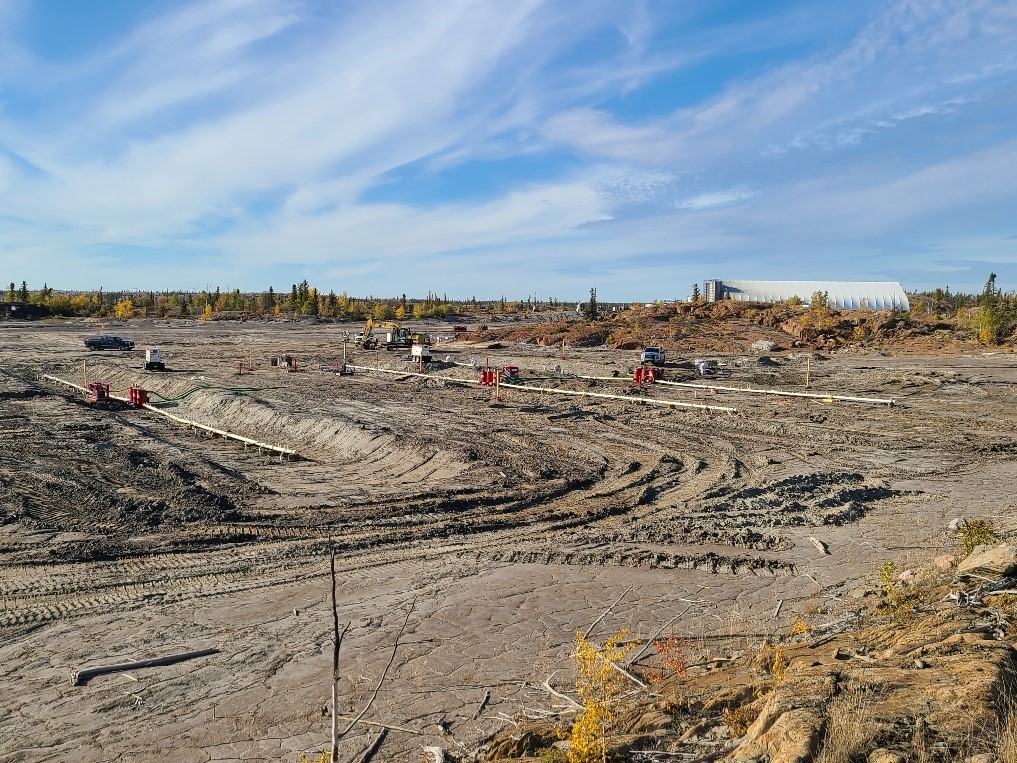
Design update: Water Treatment Plant
The Project team continues to make progress on moving the Water Treatment Plant work package forward. Now that the Project has a final design, it was able to move forward with an initial procurement process to identify potential bidders. Once this process was completed, the Request for Proposal was released to the 4 pre-qualified bidders. The Request for Proposal closes at the end of January 2023, and the Project anticipates reviewing the bids to award the contract within a month of the closing date. We anticipate the winning bidder will be able to begin the work in the 2023 field season.
Revised cost estimate for the Project
The Giant Mine Remediation Project has recently finalized its revised cost estimate. We recognize there are questions about the cost increases, and so want to provide information to help clarify why the cost estimate has changed from the initial projected estimate.
The updated estimate for implementing the Giant Mine Remediation Project is approximately $4.38 billion. The total includes $710 million of historical expenditures incurred since 2005. The Giant Mine Remediation Project team, including Parsons Inc. as the Main Construction Manager, developed the estimated project costs. It was also validated by an independent third-party expert in mine reclamation.
In 2010, the Project's estimated cost was $1 billion. This original figure only outlined the construction-related costs for the remediation work. As its closest comparison, the Project team estimates the remediation activity-specific costs will now be around $2.4 billion. The 2010 cost estimate was based on the original remediation plan developed for the Project in 2007. The original remediation plan was sent to Environmental Assessment because rights holders and stakeholders felt the Project needed to be changed to become more robust. The environmental assessment changed the scope and scale of the Remediation Plan and resulted in the approved Closure and Reclamation Plan, which contributed additional cost considerations.
The Project team also recognized the need for a more holistic estimate. This would ensure that everyone had fulsome information about what implementing the Project would cost. The team needed the cost estimate to reflect more factors than just the remediation work, such as projected inflation, contingencies and Canada's operational costs with respect to managing the Project through to 2038.
In addition to being more holistic, the cost estimate now reflects that the Project's scope, schedule and cost have been significantly affected by a number of other factors, such as:
- 15-year implementation schedule instead of 8 to 10 years
- covering the tailings with a geo-membrane and rock cover instead of revegetating, as well as capping of near shore sediments and foreshore capping of tailings, which was not considered in the 2007 plan
- creation of the Health Effects Monitoring Program
- initiation and completion of the Human Health and Ecological Risk Assessment
- creation of the Giant Mine Oversight Board, including:
- a storefront office
- starting the management of the arsenic trioxide research program
- designing and building a new Water Treatment Plant to treat water to more stringent standards and to drinking water guidelines for arsenic
- extra time needed to dry out the tailings before they can be covered
- filling the open pits as per rights holder and stakeholder requests, as the 2007 plan had pits left open
- flood plain work for Baker Creek, to allow the passage of large amounts of water in case of a flooding event
- increased funding to rights holders
- removal of an increased volume of contaminated soil
- initiation and completion of a Quantitative Risk Assessment
- main construction management contractor fees and resulting increased care and maintenance costs
- regulatory and reporting requirements as defined by our approved water license and land use permit
- remediating the townsite to 2019 residential soil criteria instead of industrial criteria and maintaining public boat launch access
- right-sizing of work packaging to ensure socio-economic benefits for Northern and Indigenous businesses and people
- significant increase in the volume of borrow material required, as a result of pit filling
Contact us
Phone: 867-669-2426
Email: giantmine@rcaanc-cirnac.gc.ca
Twitter: @GiantMine